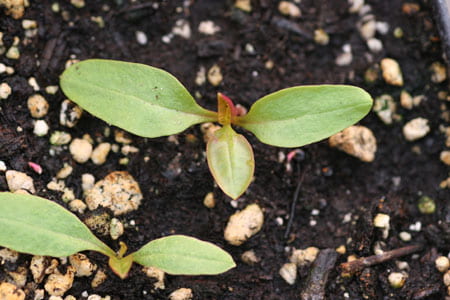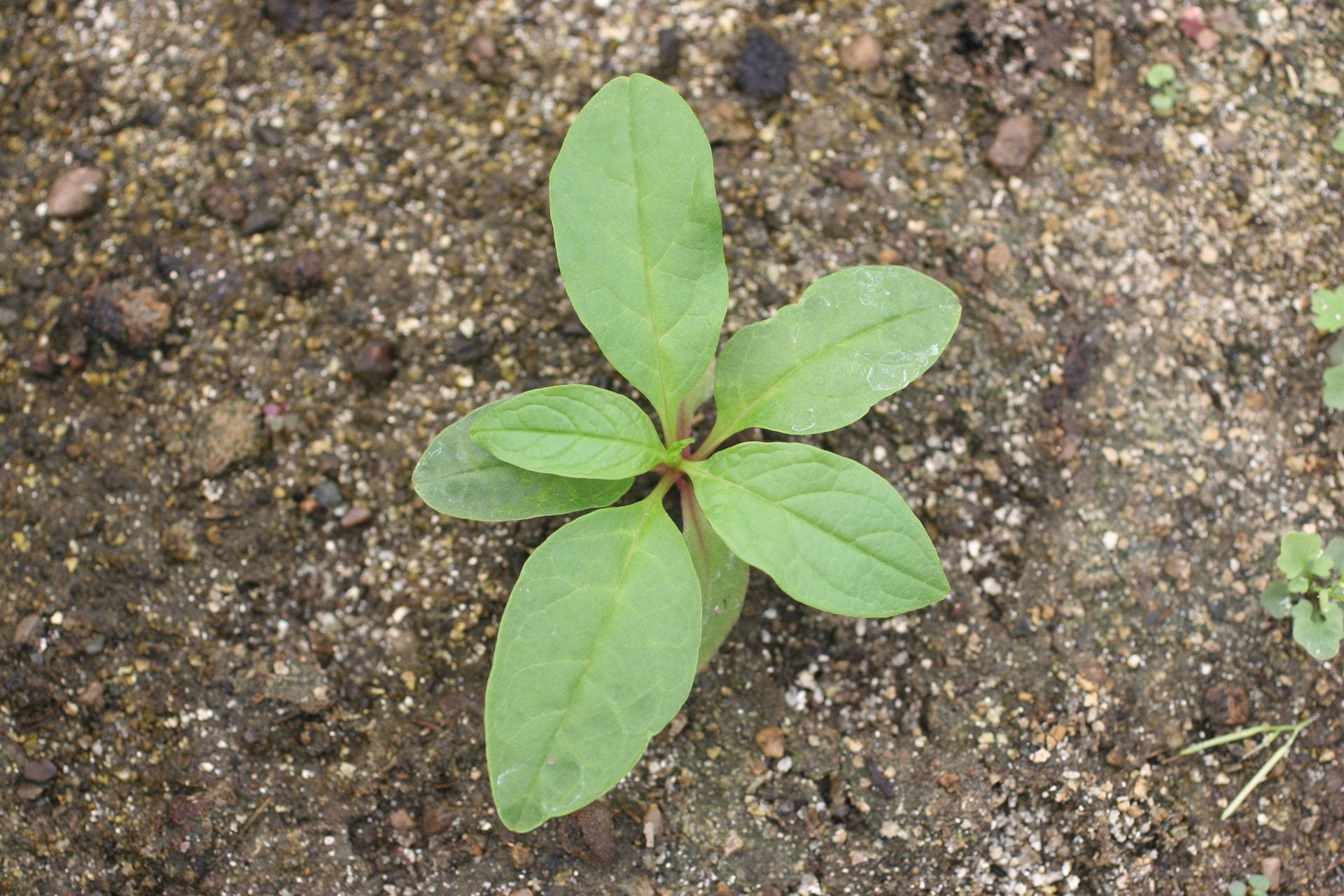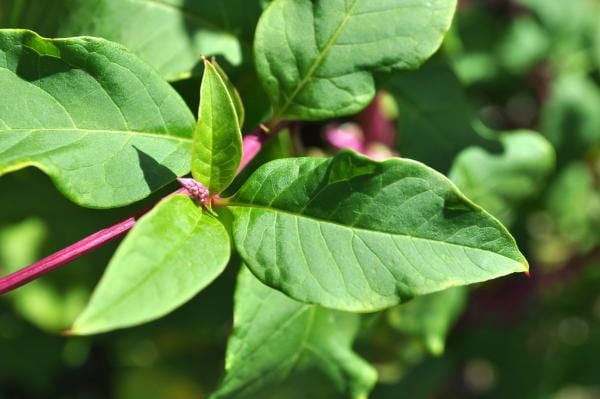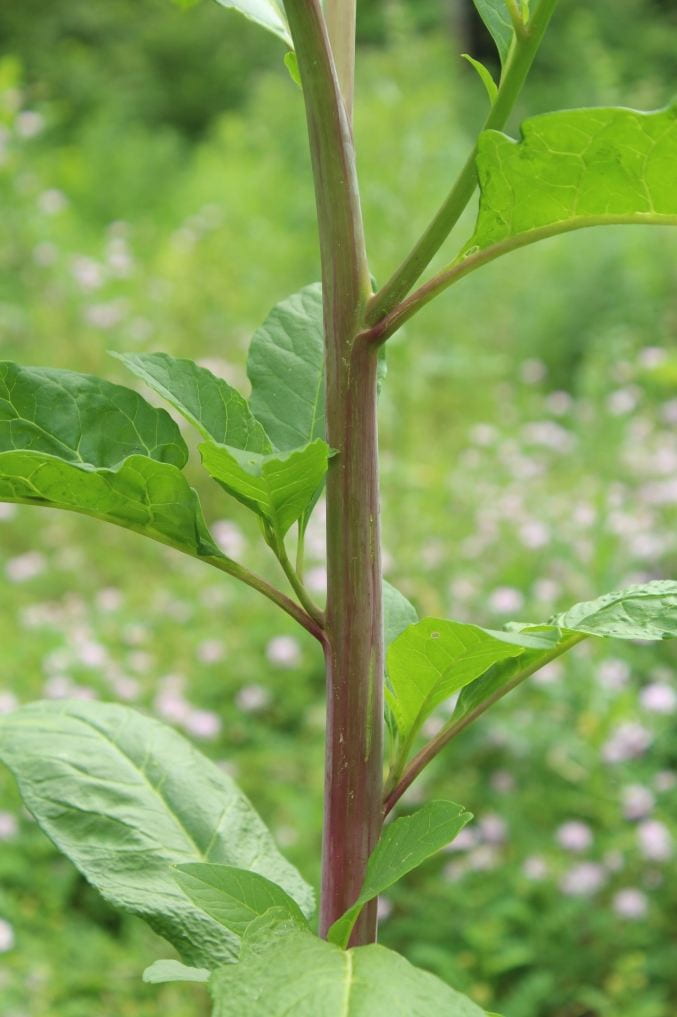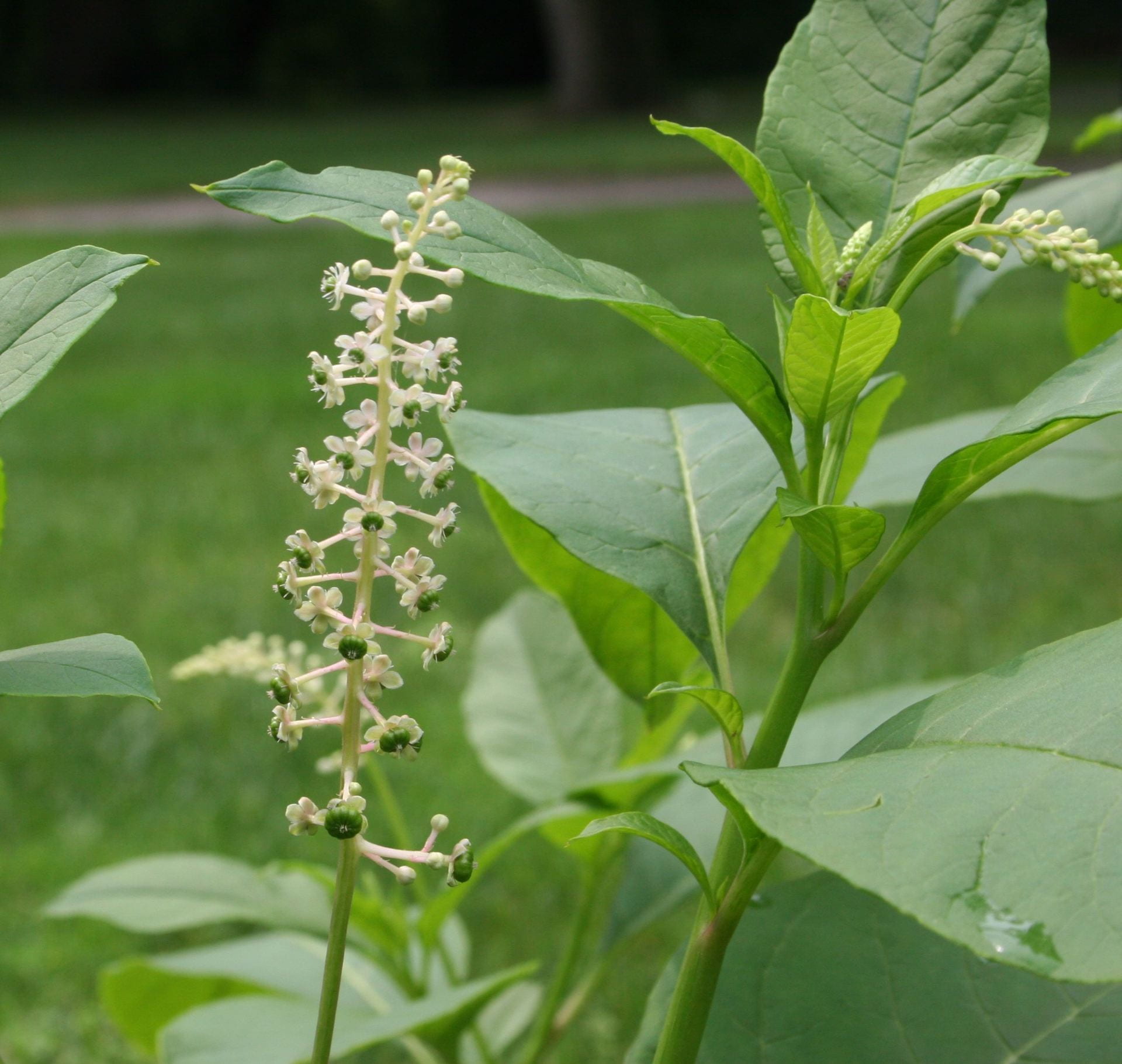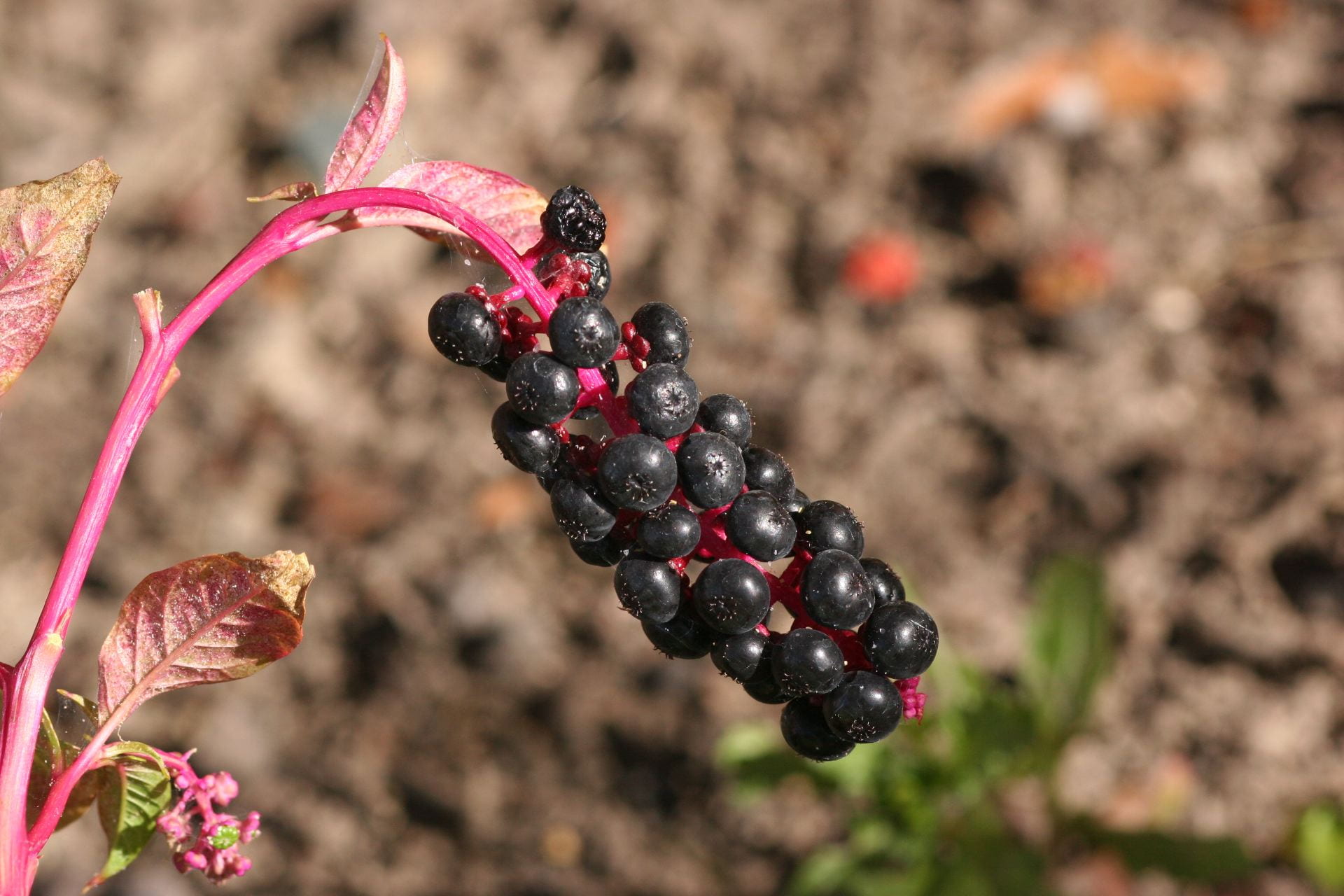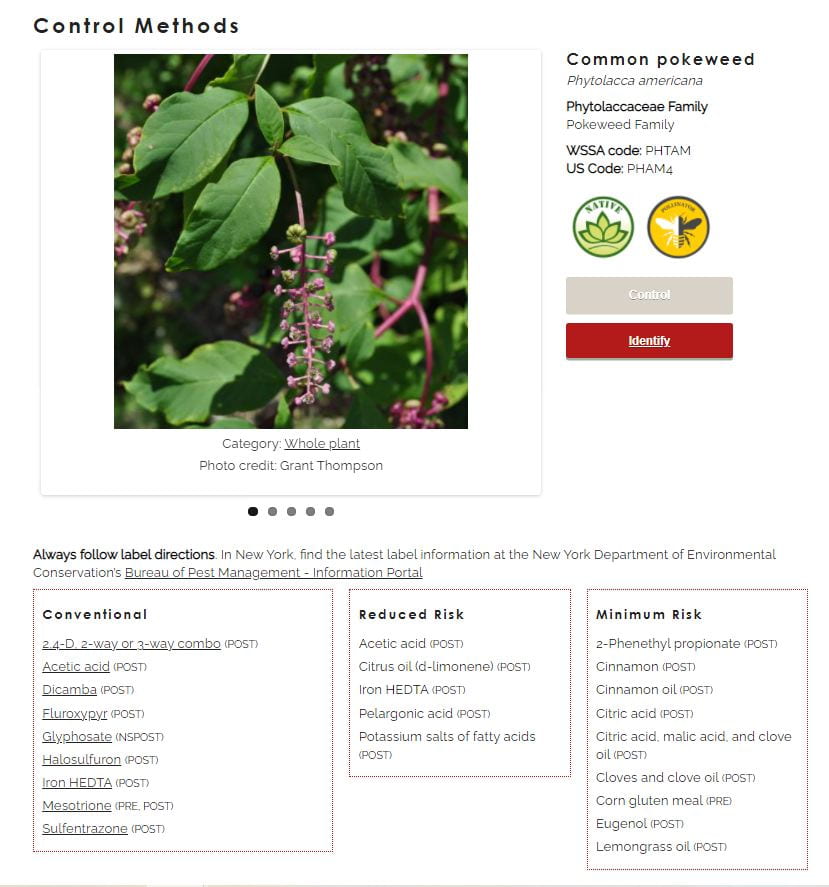Common pokeweed (Phytolacca americana) is a native, perennial herbaceous weed that is predominantely an issue in pastures, perennial systems such as berry, grape and tree fruit, reduced tillage fields, roadsides, and wood borders. Due to its toxicity, it is vital to recognize this plant to preserve both human and livestock health. Its notably large size and distinct fruits distinguish it from other plants. Even after first frost and fall dieback, this plant will leave behind large “skeletons” with new shoots emerging out of these spots the next year.
Toxicity
All parts of common pokeweed are toxic to both humans and livestock. Livestock most often affected by this plant are cattle, sheep, humans, turkeys, swine, and horses. In small quantities, symptoms of poisoning from this plant include cramps, vomiting, and diarrhea. In larger quantities, more severe reactions occur including increased heart rate and respiration, convulsions, and in extreme cases, fatality. It is recommended to use gloves when handling the weed because toxins may also be absorbed through the skin. To learn more about common pokeweed toxicity and other plants that may threaten livestock please visit Cornell Animal Science’s Database on Plants Poisonous to Livestock and other Animals
Identification
Seedlings: Seedlings emerge from mid-spring to early summer. Cotyledons are egg- to lance-shaped. Seedling leaves may have a reddish underside.
Common pokeweed seedling. Image by Michigan State University Plant & Pest Diagnostics, via Bugwood.org.
Leaves: Common pokeweed has entire, smooth, fleshy green leaves. Leaves are large, up to 1/2 meter (20 inches) long and 18cm (7 inches) wide. The largest leaves appear at the bottom of the plant and become progressively smaller towards the top. Leaves are alternately arranged and lance-shaped. The top of the leaves are dark green, while the underside is lighter green, often with pink veins. Leaf stems (petioles) often reddish. Crushed leaves give off an unpleasant odor.
Mature plant: Common pokeweed can grow up to 10ft in height. Plants have a notably large, fleshy, white taproot that can grow up to 6 inches in diameter. Often, multiple stems emerge from one taproot. Stems are often reddish, up to 10cm (4 inches) thick, typically hollow, and branched towards the top.
Common pokeweed leaves. Photo by Grant Thompson via Cornell University Turfgrass and Landscape Weed ID.
Flower/fruit: Common pokeweed blooms in midsummer. Flowers have 5 whitish-green petal-like sepals, and are arranged in long narrow clusters. Flower clusters are typically erect when blooming, but as the berries mature the clusters become nodding. Berries are green as they first develop, becoming deep purple-black in late summer and fall. Pokeweed berries are often eaten by birds, who facilite the plant’s spread.
Common pokeweed flowers. Image by Michigan State University Plant & Pest Diagnostics, via Bugwood.org.
Management
Chemical control
Cornell University’s Crop and Pest Management Guidelines offer weed control information; in this case, the berry, grape, and tree fruit guidelines are most applicable. Cornell University’s Turfgrass and Landscape Weed ID app offers suggestions for conventional and alternative chemical control options. Specific timing for various herbicide applications in natural areas are offered by the University of California.
Non-chemical control
A key to non-chemical control for common pokeweed is to manage it while it is still small, before it can establish its large tap root. Hand pulling, mowing, and cultivation are effective means of control when the plant is small. Remember to wear gloves when hand-pulling. More established plants can be dug up with a shovel, however; this can be challenging in summer when soils are dry and hard. Cultivation that severs taproots well belowground may reduce or remove adult plants, but several years of management will likely be necessary in order to fully deplete energy stored in the taproot to completely eradicate the plant. When removing mature plants, be sure to bag up the plant’s berries to prevent them from re-establishing the population.
References
Cornell University’s Turfgrass and Landscape Weed ID app. Identification and control options for weeds common to turf, agriculture, and gardens in New York; uses a very simple decision tree to identify your weed. http://turfweeds.cals.cornell.edu/plant/control/224
Cornell University’s Weed Ecology and Management website. Contains a wealth of information on ecological management of agricultural and garden weeds. Look for a revamp of this site in 2021.
Weed Control in Natural Areas in the Western United States, by the University of California Weed Research & Information Center. 2013. Excerpt weed report on Phytolacca americana.
Michigan State University – Plant & Pest Diagnostics: Pokeweed https://www.canr.msu.edu/weeds/extension/common-pokeweed
Ohio State University- Ohio Perennial and Biennial Weed Guide: Common pokeweed (Phytolacca americana) https://www.oardc.ohio-state.edu/weedguide/single_weed.php?id=112
University of California Agriculture & Natural Resources Statewide Integrated Pest Management Program-How to Manage Pests- Pests of Homes, Structures, People, and Pests: Pokeweed http://ipm.ucanr.edu/PMG/PESTNOTES/pn74173.html
US Forest Service- Plant of the Week: American Pokeweed by David Taylor https://www.fs.fed.us/wildflowers/plant-of-the-week/phytolacca_americana.shtml


